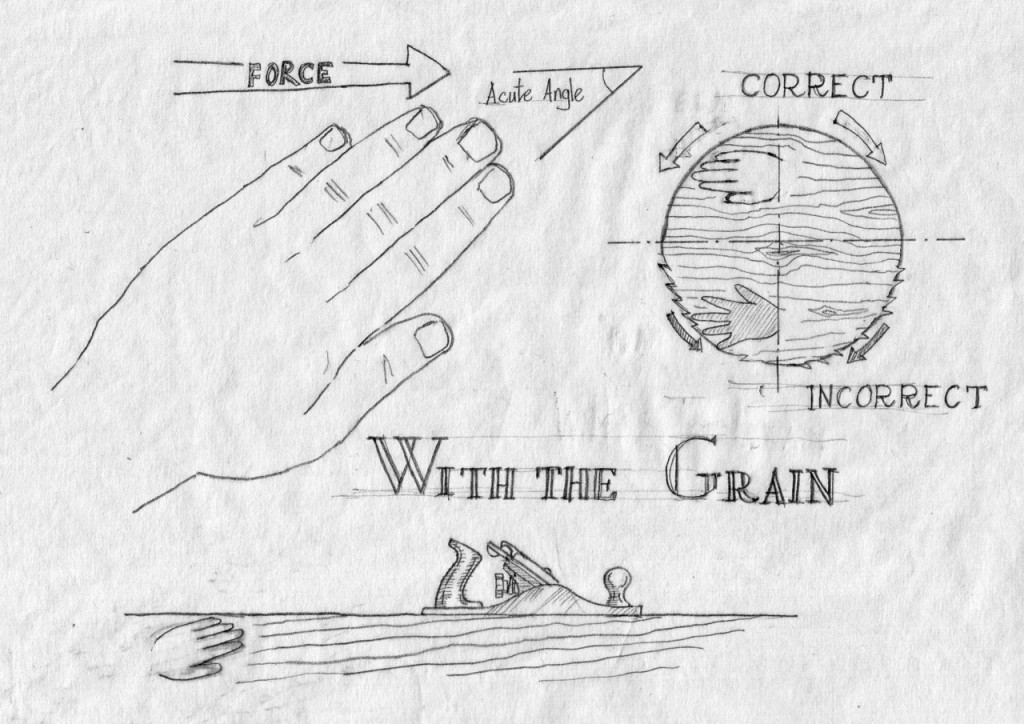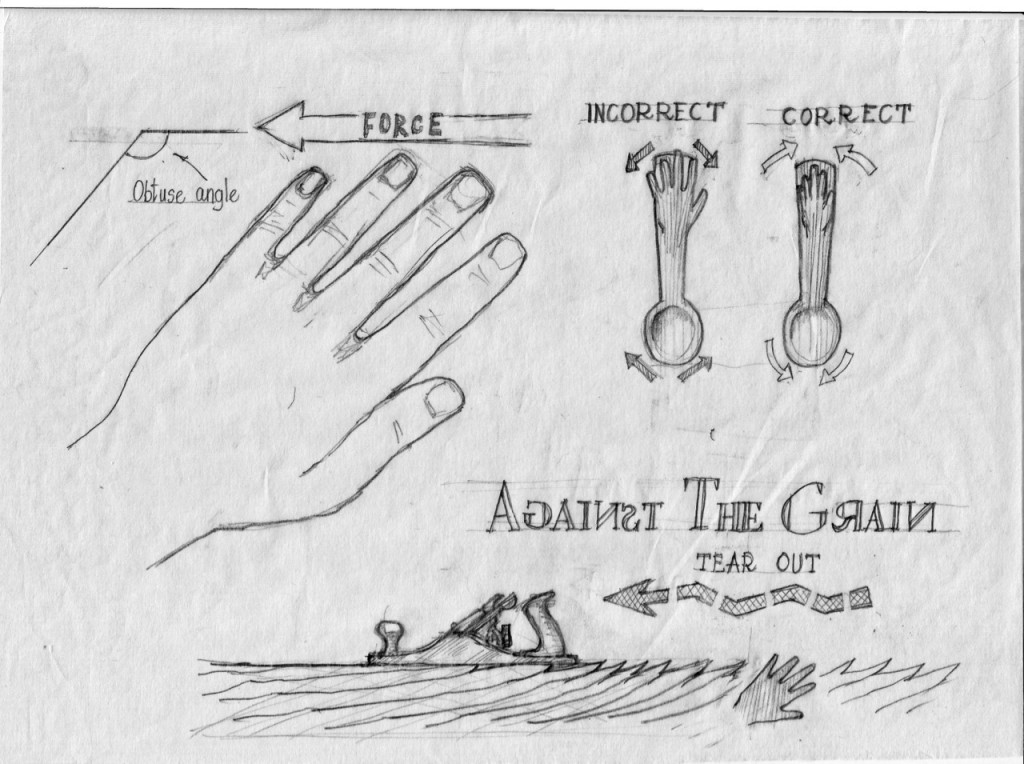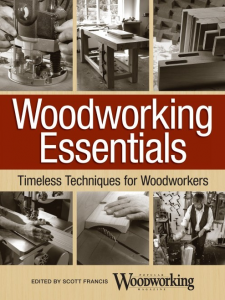We may receive a commission when you use our affiliate links. However, this does not impact our recommendations.

Imagine your fingers as the grain of the wood. The cutting force, whether it is a chisel, a gouge, a rasp or a plane should act in the direction of the grain (towards the tips of your fingers in an acute angle.
Perhaps the most important characteristic of wood is its grain. And grain orientation is undoubtedly the most critical consideration for charting a plan for cutting, milling and shaping wood. Therefore, reading the grain is paramount for good woodworking. When possible, we should always strive for planing, chiseling, rasping and gouging with the grain and not against it. Due to the critical importance of this guideline, the inverse, “going against the grain” became such a prevalent idiom.
When I teach my students woodworking basics I try to give them a simple tool to help them identify the desired relationship between grain orientation and the direction in which they ought to use their tool, whether it is a plane, a chisel or a rasp. I tell them that their hand is a great representation of the piece of wood they work on and that they should imagine their fingers as the grain of the wood. I demonstrate to them what happens when a force, or a cutting tool (I use my other hand) passes over the close fingers in the direction of the grain (acute angle), how the fingers are kept close and support each other. Then I reverse the direction of the force and show them what happens when a tool is working in an obtuse angle to the tips of the fingers and how this separates them, as an analogy for tear out. Then I explain to them how to use this knowledge when they work on their projects such as carving a spoon, planing stool legs or gouging a cove around a box’s lid. If you are teaching woodworking to kids, this little technique can be especially useful.
Above and below you can see some illustrations that demonstrate how to place your hand on a piece of wood, read the grain and conclude per the correct carving, planing, etc. direction. Although this technique will not work 100% of the time (we all know how the grain can sometimes play tricks on us) it will help young woodworkers demystify something that might be intuitive to seasoned woodworkers.

If the cutting tool (the force) intersects with the tips of the grain (imagine your fingers in this case) you will create a tear out on the surface of the wood.
 Check out “Woodworking Essentials: Timeless Techniques for Woodworkers” for more must know techniques…
Check out “Woodworking Essentials: Timeless Techniques for Woodworkers” for more must know techniques…
Here are some supplies and tools we find essential in our everyday work around the shop. We may receive a commission from sales referred by our links; however, we have carefully selected these products for their usefulness and quality.






![How To Sharpen A Gouge [Video]](https://www.popularwoodworking.com/wp-content/uploads/bfi_thumb/dummy-transparent-olcy6s63it1p9yp7uhusjas7c8kahafrhg9su7q9i0.png)


What remarkable drawings! You really made this subject come to life. I finally understand and can’t wait to get down to my shop and try this out.
What fantastic drawings!